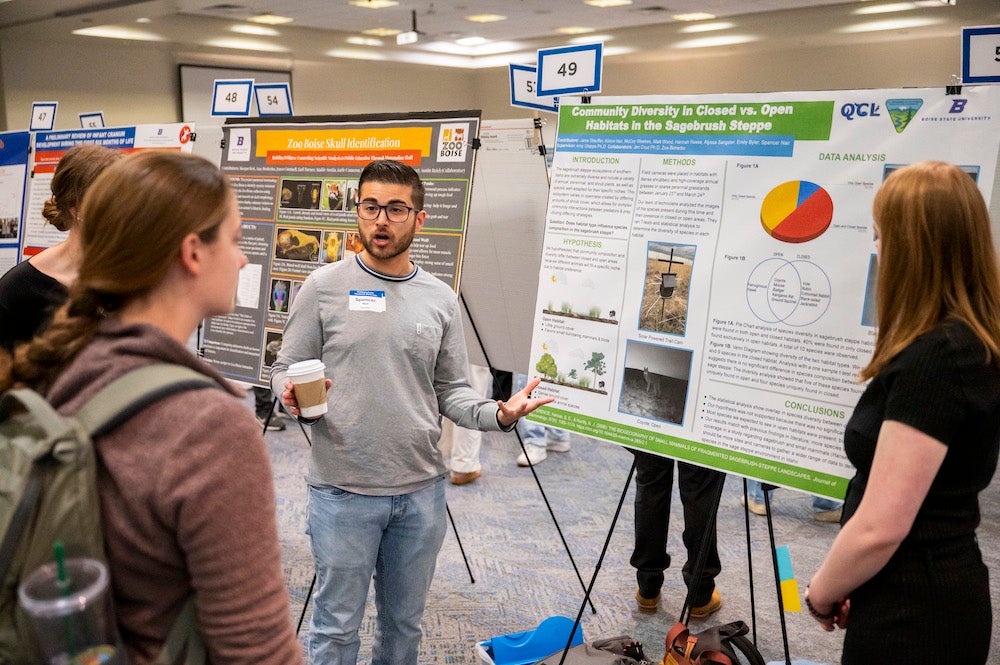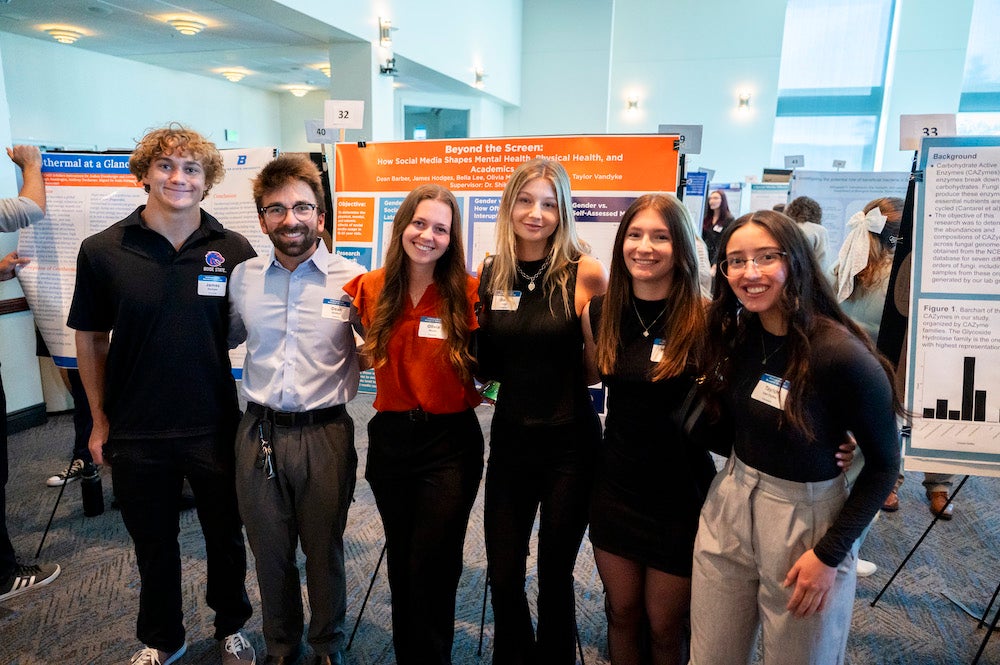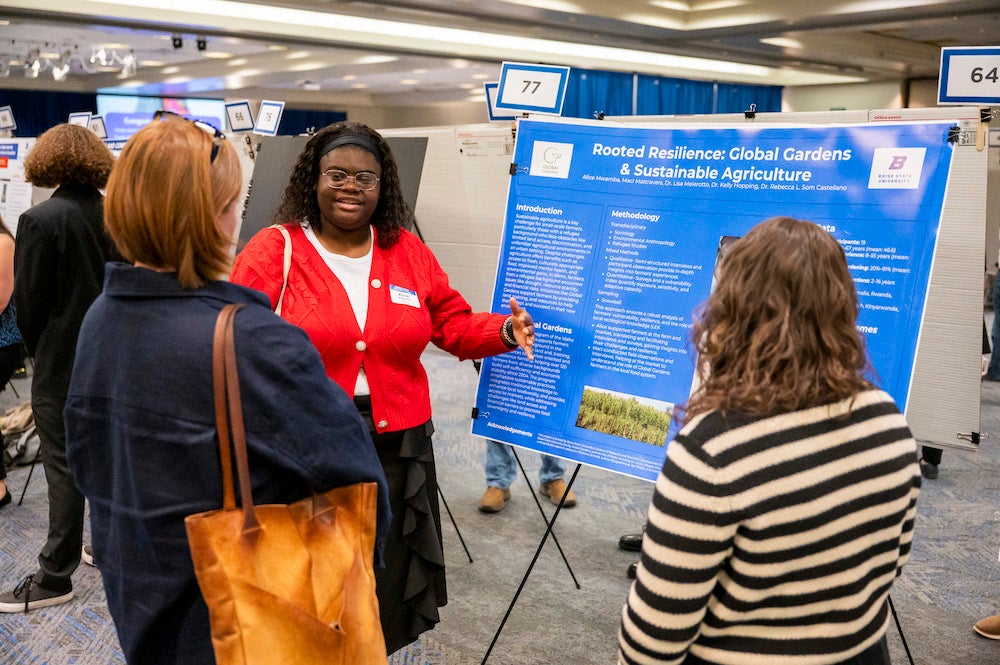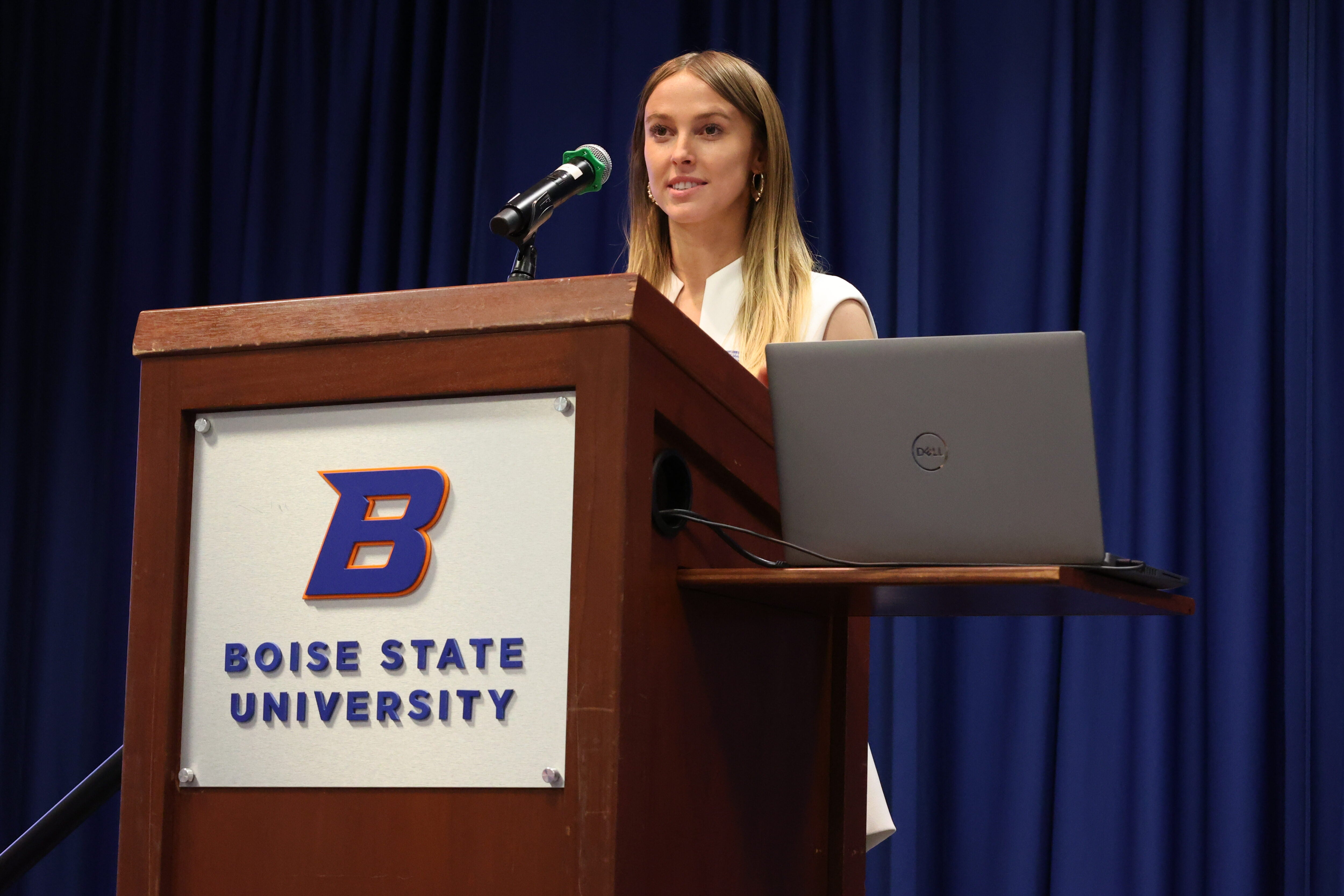
The spring Undergraduate Research Showcase is one of the highlights of April’s celebration of Research and Creative Activity Month. On April 15, 2025, Boise State’s students broke prior records for participation with an all-time high number of research and humanities presentations. This annual event is hosted by the Office of Undergraduate Research.
The showcase in the Student Union Building saw a jaw-dropping 239 presentations (an increase of nearly 100 posters from the 2024 showcase) representing 600 collaborators. At the event, 88 graduating seniors received EURECA cords to commemorate their completion of 135 hours of research experiences across at least two semesters. The event was attended by more than 660 people.
This leap in student participation, presentations and areas of research and creative activity speaks volumes about Boise State faculty, staff and student’s investment in the university’s goal to advance research and creative activity, as well as the university’s progression towards Carnegie R1 Classification status, or ‘Very High Research Activity’ status for an institution of higher education.
Four faculty received the award of Office of Undergraduate Research Mentors of the Year, including Eric Martin, an associate professor of Kinesiology; Casey Kennington, an associate professor of Computer Science; Jenee Cyran, assistant professor of Chemistry; and Cynthia Campbell, a professor and chair of psychological sciences.

“One of the challenges in higher education is the belief that people have to be experts in order to contribute meaningfully. The Undergraduate Research Showcase is one way Boise State makes the case that people beginning, or trying out research experiences have something meaningful to share and to celebrate too,” said Jim Fredricksen, who coordinated the event. “Each of us at Boise State can contribute and connect with each other when we share the stories of our scholarship -the stories of what we learned and, importantly, how we learned it.”

Undergraduate students from every college shared their research topics, ranging from subjects such as “Stay Awake, Stay Alive: Identifying At-Risk Age Groups for Drowsy Driving Fatalities” submitted by College of Health Science Student Ashlee Ziegelmann, to “How Green Are We? Socioeconomic Drivers of Sustainable Spending” by College of Business and Economics student Malia Wilson, and “Modernizing Legacy Scientific Code: A Fortran-to-Python Translation of EXAFS Self-Absorption Correction Algorithms” by Levi Recla, a College of Engineering student.
In addition to the marked uptick in presentations, 16 students captivated audience members with “lightning talks” on their topics of study and creativity.

Hailing from Boise, Katelyn Stedtfeld is a senior visual art major with an emphasis in drawing and painting. Her thought-provoking lightning talk challenges the historical role of the female nude and the male gaze in art. Stedtfeld credits three art professors – associate professor Astri Snodgrass, adjunct professor Erin Cunningham, and professor Chad Erpelding for “opening my eyes to countless new mediums and techniques to further my knowledge of art-making as a subject and as a practice.”
“This project interests me because this phenomenon of the male gaze did not stop with artists from thousands of years ago and is still prevalent in our day and age through fashion, advertisement, and other artistic practices,” Stedtfeld said. “By bringing these recurring art historical images into my art, I catch the viewer, and probe them to consider what they are viewing, why they are viewing it, and the years’ worth of history that preside alongside imagery of the nude female in art.”
Lightning talk presenter Sarah Cole, a senior materials science and engineering student, under the mentorship of associate professor Brian Jaques, spoke about her important research in the area of nuclear fuels. Cole hails from Meridian and credits a high school internship with Jaques with fueling her current educational path and research project.

“My research focuses on advanced nuclear fuel synthesis,” Cole said. “The goal of my research is to produce high purity, high density nuclear fuel pellets for characterization and experimentation. This research interests me because uranium nitride has the potential to increase the reliability and performance of nuclear fuels. More broadly, I believe nuclear energy should play a bigger role in the nation’s energy mix as our best option available for fighting climate change while also meeting the rising energy demand.”